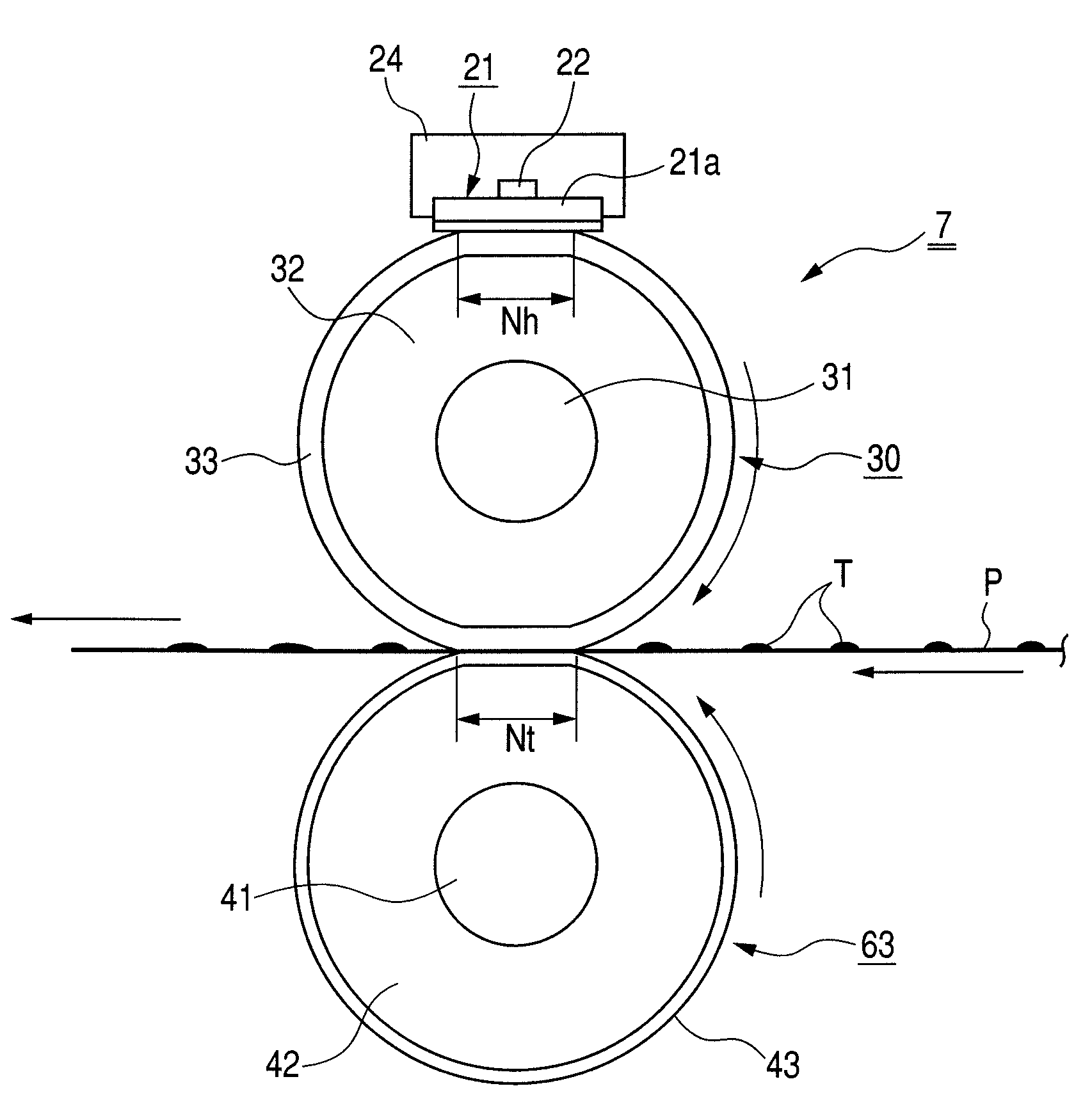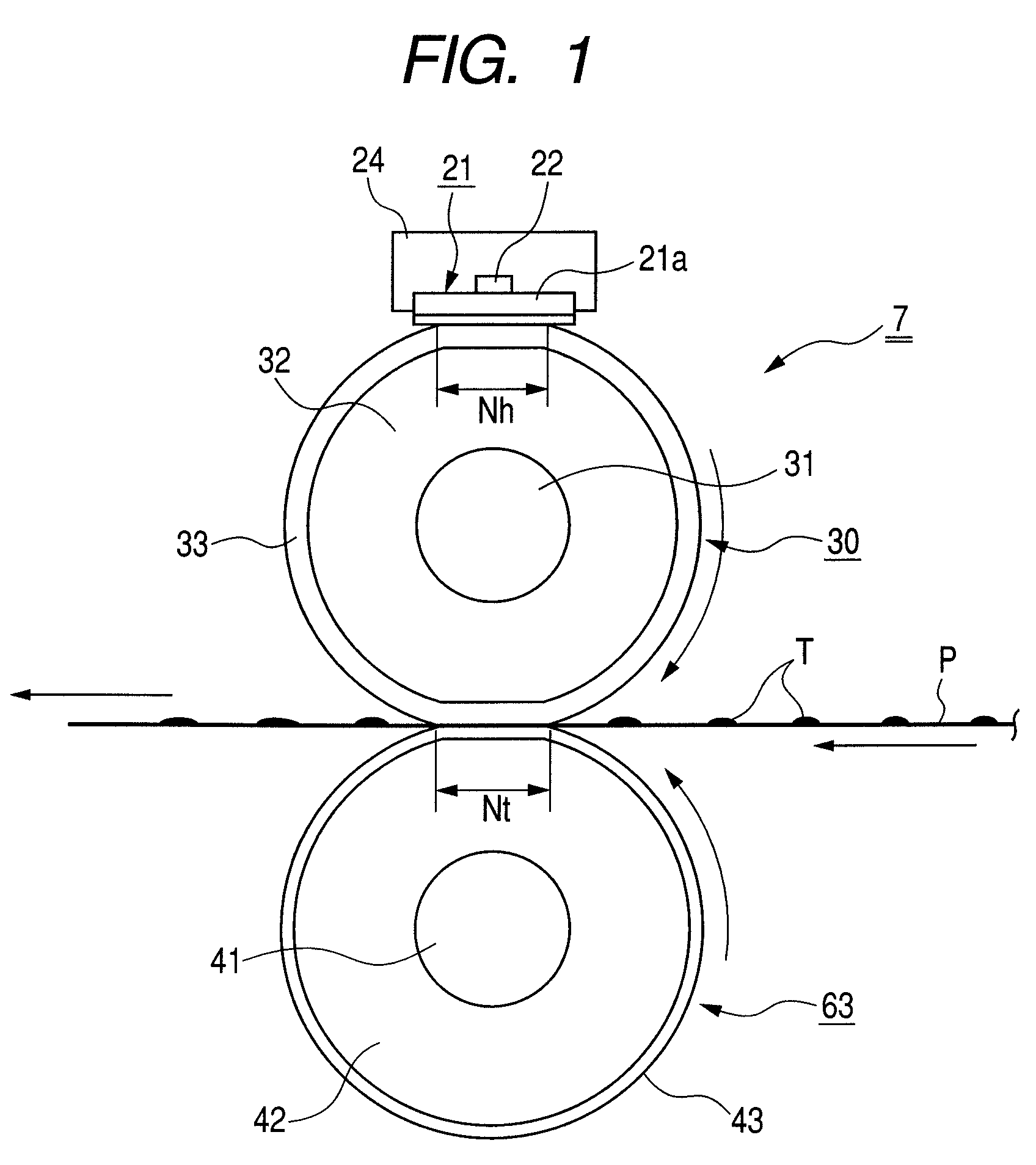Image heating apparatus and rotatable heating member used for the same
a technology of heating apparatus and heating member, which is applied in the direction of electrographic process apparatus, instruments, optics, etc., can solve the problems of rubber deterioration, damage, and inability to apply sufficient heat to recording materials,
- Summary
- Abstract
- Description
- Claims
- Application Information
AI Technical Summary
Benefits of technology
Problems solved by technology
Method used
Image
Examples
first embodiment
(1) Example of Image Forming Apparatus
[0057]FIG. 2 is a schematic cross-sectional view illustrating a schematic construction of a laser beam printer (hereinafter, simply referred to as ‘printer’) 1 as an image forming apparatus according to this embodiment.
[0058]The printer 1 receives image information from an image information providing apparatus (not shown), such as a host computer disposed outside the printer 1. The printer 1 performs a series of image forming processes for forming an image on a sheet-like recording material (recording medium) P according to the received image information by a known electrophotographic system.
[0059]The printer 1 includes a process cartridge 4 that holds a drum-shaped rotatable electrophotographic photosensitive member (hereinafter, simply referred to as ‘photosensitive member’) 2 serving as a latent image bearing member, a primary charging mechanism 8, and a developing device 3. Further, the printer 1 includes a laser scanner unit (hereinafter, s...
experiment 1
[0174]In the fixing roller 30 used in this experiment, a silicon rubber layer serving as the heat insulating elastic layer 32 having a thickness of 2.0 mm was formed on an SUM core metal 31 having an outer diameter of 8 mm. The silicon rubber layer serving as the heat insulating elastic layer 32 was formed by adding an acrylonitrile balloon as a hollow resin having a particle size of 80 μm to the silicon rubber and mixing triethyleneglycol to connect foams with a small amount. A thermal conductivity of the heat insulating elastic layer 32 was 0.12 [W / (m·K)], and a volume heat capacity thereof was 1.1×106 [J / (m3·K)].
[0175]A silicon solid rubber layer serving as the heat storage layer 33 was formed outside the heat insulating elastic layer 32.
[0176]That is, the fixing roller 30 used in this experiment is a fixing roller including two silicon rubber layers 32 and 33, in which the heat storage layer is formed as the surface layer of the fixing roller. An outer diameter of the fixing rol...
experiment 2
[0201]Next, the heat storage layer 33 of the fixing roller 30 was formed only by changing the thickness of the heat storage layer 33, and a comparative experiment was carried out.
[0202]In this experiment, a fixing roller 30 was used in which a silicon rubber layer serving as a heat insulating elastic layer 32 is formed on an SUM core metal 31 having an outer diameter of 8 mm to have a thickness of 2.0 mm. The silicon rubber layer serving as the heat insulating elastic layer 32 was formed by adding an acrylonitrile balloon as a hollow resin having a particle size of 80 μm to a silicon rubber and mixing triethyleneglycol to connect foams with a small amount. The thermal conductivity of the heat insulating elastic layer 32 was 0.12 [W / (m·K)], and the volume heat capacity thereof was 1.1×106 [J / (m3·K)].
[0203]A silicon solid rubber layer serving as a heat storage layer 33 having a thermal conductivity of 0.3 W / (m·K) and a volume heat capacity of 1.5×106 J / (m3·K) was formed outside the he...
PUM
 Login to View More
Login to View More Abstract
Description
Claims
Application Information
 Login to View More
Login to View More - R&D
- Intellectual Property
- Life Sciences
- Materials
- Tech Scout
- Unparalleled Data Quality
- Higher Quality Content
- 60% Fewer Hallucinations
Browse by: Latest US Patents, China's latest patents, Technical Efficacy Thesaurus, Application Domain, Technology Topic, Popular Technical Reports.
© 2025 PatSnap. All rights reserved.Legal|Privacy policy|Modern Slavery Act Transparency Statement|Sitemap|About US| Contact US: help@patsnap.com



